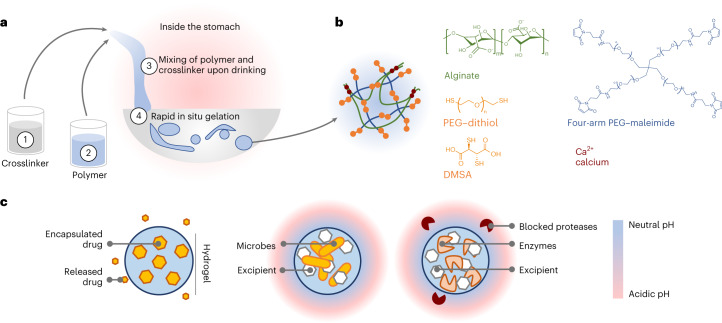Fig. 1. Overview of LIFT hydrogels.
a, LIFT hydrogels form within the stomach after oral administration of (1) a 200-ml crosslinker solution comprising CaCl2 and a dithiol-containing molecule, followed by (2) a 20–40-ml polymer solution comprising alginate and four-arm PEG–maleimide. These two solutions (3) mix within the stomach to form a tough double-network hydrogel (4) within the stomach. b, Schematic of the polymers and reagents used to facilitate crosslinking. Materials were selected due to their established safety profiles. Both PEG–dithiol and dimercaptosuccinic acid (DMSA) were investigated as a dithiol crosslinker. c, Left: LIFT hydrogels may act as controlled release depots through encapsulation of water-insoluble drug that gradually dissolves and diffuses from the hydrogel. Middle and right: LIFT hydrogels enable co-encapsulation and co-localization of therapeutic microbes or enzymes and excipient (for example, CaCO3) that modulate local pH and protect against proteases.

